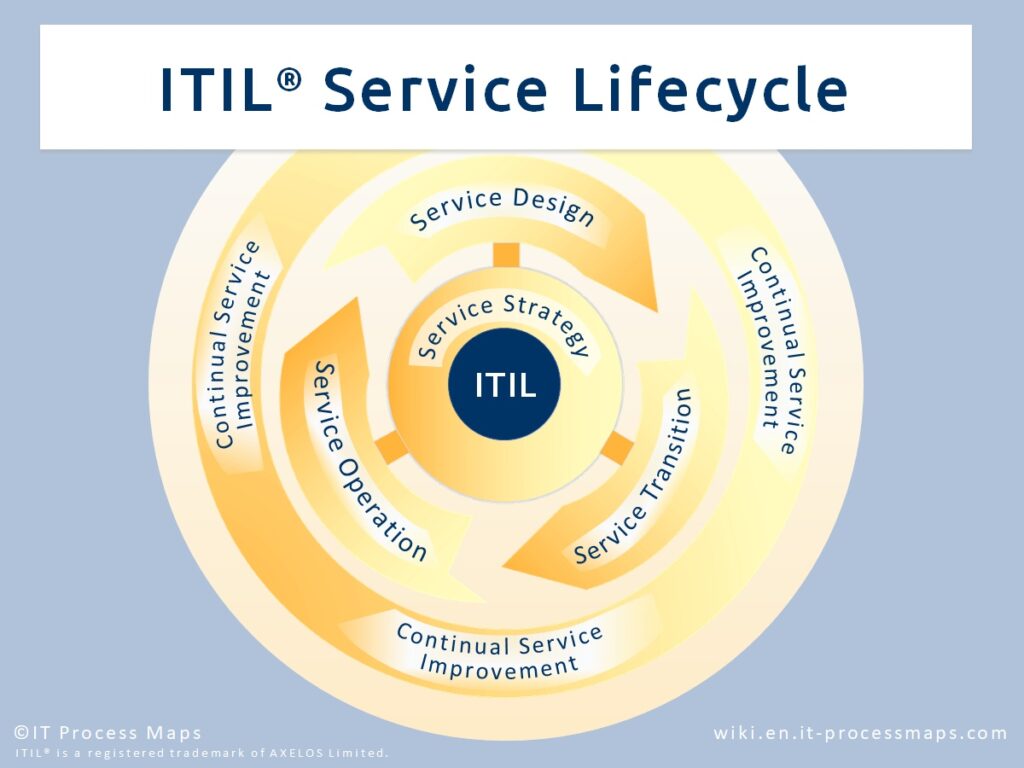Let’s talk about the presence of technology in your business today. Do you want to be able to take mobile payments? Maybe you’d like to manage the feedback from your customers to improve the service you provide. Whatever your needs might be, you have to admit; technology makes it more accessible.
Luckily when it comes to that time (and every business experiencing growth gets there) when you need to manage a customer relationship program or need some help identifying services you could offer, there is a path for you. Using the Information Technology Infrastructure Library (ITIL) frameworks, you can quickly implement industry-standard PLANNING, SUPPORTING, and DELIVERING the type of service you want to see in your startup!
ITIL isn’t just a one-time event that will help your company. You’re not running a get rich quick scheme. It’s more of a Service Management Way of thinking and behavior for your IT. Really what you get is a seasoned approach to running any business that involves technology to administer their services.
Big company? There are frameworks for that.
Small company? There are frameworks for that.
Evolving company? There are frameworks for that.
If the pattern wasn’t visible enough, there is an ITIL framework for any company using technology since it’s absolutely non-prescriptive.
“Okay, but how can it help MY startup?”

ITIL: The ITIL Service Lifecycle). – Source: https://wiki.en.it-processmaps.com/index.php/Main_Page
(I’m glad you asked!)
1. Strategy
What do I get from a Service Strategy?
- You get to identify your customer base
- Solidify the services customers need
- Solidify the services you can provide
Service Strategy is the core of your entire framework and for good reason. By understanding and improving the services your customers need, and the services you provide to them, your startup experiences a sort of Existential Self-Discovery. Who am I? What am I here to do?
2. Design
If Service Strategy is the “Who am I and what am I here to do” question, then Service Design is the “How am I going to achieve what I am here to do” matter. Design is where customer satisfaction/expectations play a tyrant. Effective and efficient designing of supporting processes is applied here for the most cost-effective route to please the tyrant.
3. Transition
Service Transition is the fun part; this is where you begin to implement your freshly designed services to your customer base in a CONTROLLED and efficient way. This phase must remain as controlled as possible to minimize reported incidents!
4. Operation
Service Operation is the phase where your startup gets to sit back and focus on providing service to customers with a robust fire-fighting style support system. You have a dedicated team monitoring your successes and failures, problems, and incidents. Essentially, your startup will have the capacity to keep service-related fires under control with proper Service Operations.
5. Continual Service Improvement
You always want to keep your eyes open for new technologies and processes that would aid in providing value to your startup and your customers – and this is the time phase to focus on just that. Service Improvement had better be in every service provider’s vision, but if it isn’t, guess what? There’s a framework for that!
How to apply ITIL to your business
There are a few things your business needs to do before you can ‘start’ living an ITIL life. You want to start where you are. Bring on an ITIL Consultant to identify and assess the processes your unique business already has and determine which best practices would benefit you most.
Therefore, putting into action ITIL, you will need to:
- Document your set business goals and objectives,
- Document what plans you currently have in place to achieve those goals
- Shortlist the relevant plans that you need to improve upon by identifying the gaps between your current services and goals for improvement
- Choose processes and best practices
- Use project management tools and techniques to put your new plans into action
- Measure and monitor the changes you have made to ensure that you are meeting goals and making adjustments to improve when you are not achieving your goals.


Comments are closed